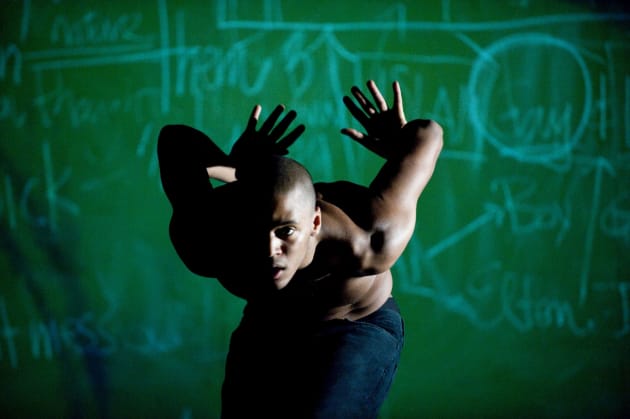Deviations with Lloyd Newson and DV8
Choreographer Lloyd Newson has used contemporary dance as a fearless questioner of social issues and injustices. So it was unlikely his conversation with Emma Sandall would be anything but candid.

What exactly can we dance about? Australian-born theatre director and choreographer Lloyd Newson has been asking this question since the early 1980s. He was driven initially by frustration with the form’s preponderance of superficiality and what he forthrightly calls “con-artistry”.
“At one point I thought, ‘I need to do stuff that I find true to my life’. I was tired of going on stage executing empty movements in a leotard and doing duets pretending to be heterosexual. There were lots of issues that I observed, that I read about, that were not being addressed in dance, and I thought, ‘how can I take those real life issues and put them into the art form?’”
What he then found, and has proved time and time again with his UK company DV8 Physical Theatre, is that dance can present social, cultural and political issues that we need to think about and talk about in an extremely powerful way. Despite the fact that the ideas he has presented are confrontational, often uncomfortable, he has found a large and willing audience looking for a greater level of engagement and provocation in dance and theatre.
Newson’s works grab social issues and blind spots and open them up dauntlessly. His works probe homosexual and heterosexual relationships; examine expressions of masculinity in society; give voice to the social outcast, the non-conformist and unconventional; and critique religious and social structures which work so well for some, but so poorly for others.
These topics and their inherent contracts and contradictions have fuelled his creativity for 30 years. Rather than step lightly around them, he has dug ever deeper to reveal new ways of considering them. He understands that, whether we admit it or not, many of us are intrigued by things we fear or simply don’t understand; things we tend to turn a blind eye to, hum loudly over, or gasp at outright.
A glimpse at his background and the focus and choice of his creativity begins to make sense. He was an athletic boy growing up in no fewer than 38 different homes in the 1960s and 70s (his father travelled around Australia as a mechanic with the RAAF). He gained a degree in psychology and social work at Melbourne University and came to terms with his sexuality at the end of the 1970s; during this time made his first foray into dance. Dance provided a welcome respite from academia. He was inspired by its physical challenges as well as how expressive it could be. He was gradually becoming disillusioned by the approach to psychiatric problems then in practice. Dance opened up a new career path – one through which he would eventually be able to express the issues he thought were important and he most cared about. And whether he could foresee it then or not, his art would become political and an attempt to be an instrument of change.
How exactly does dance tackle big topics? Newson is well aware of the pitfalls: “Often people start with an intended subject matter but they are seduced by the aesthetics and kinaesthetics that they were trained in, and the intended subject matter becomes subverted to prettiness.”
Newson believes many choreographers lack accountability, hiding behind abstractionism and playing on the general public’s lack of knowledge of the form. He’s also clear that many in his field endow a dance work with more meaning or substance than it warrants. While he admires a “mean dance phrase” he adds, “don’t pretend it’s about something else!” . . .
This is an excerpt from the April/May issue of Dance Australia. For the full article, buy the new issue at your favourite magazine retailer or subscribe here, or purchase an online copy via the Dance Australia app.


